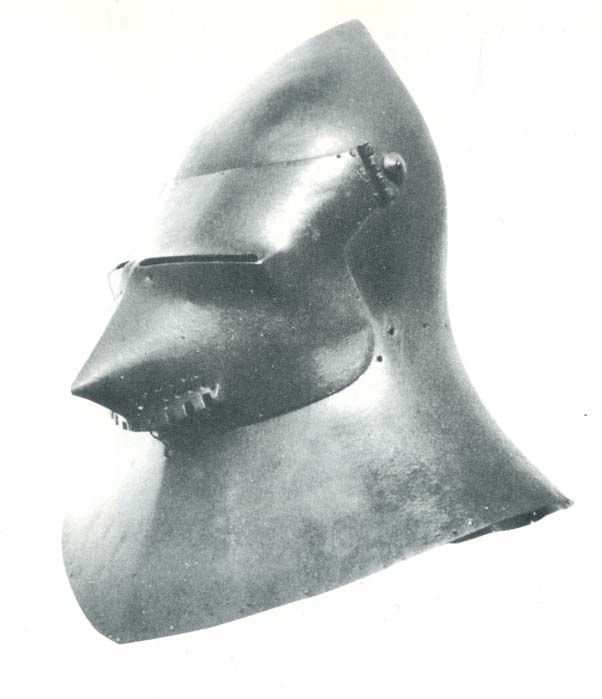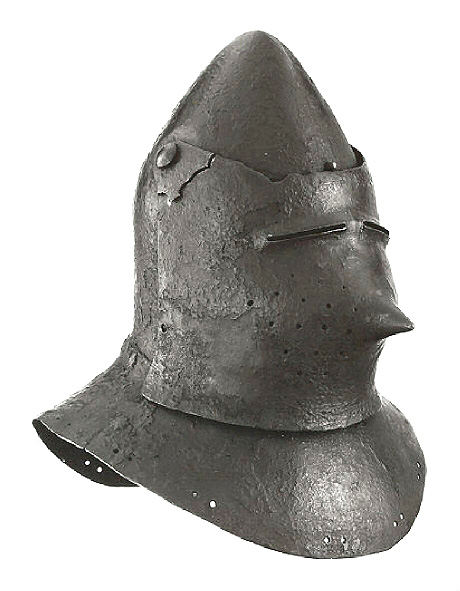It's dated to c. 1400 and resides in the Ducal Palace in Venice.
I'm not sure I've seen anything like it before. I've seen great bascinets with the skull and neck protection made of multiple plates, but never anything quite like this. It's an impressive piece of work.
Does anyone know of any others like this or any other pictures of this helm?
By the way, this one is published in 2,500 years of European helmets, 800 B.C.-1700 A.D by Howard M Curtis and Ritter-Rüstungen--Der Eiserne Gast: Ein Mittelalterliches Phänomen by Dario Lanzardo.

